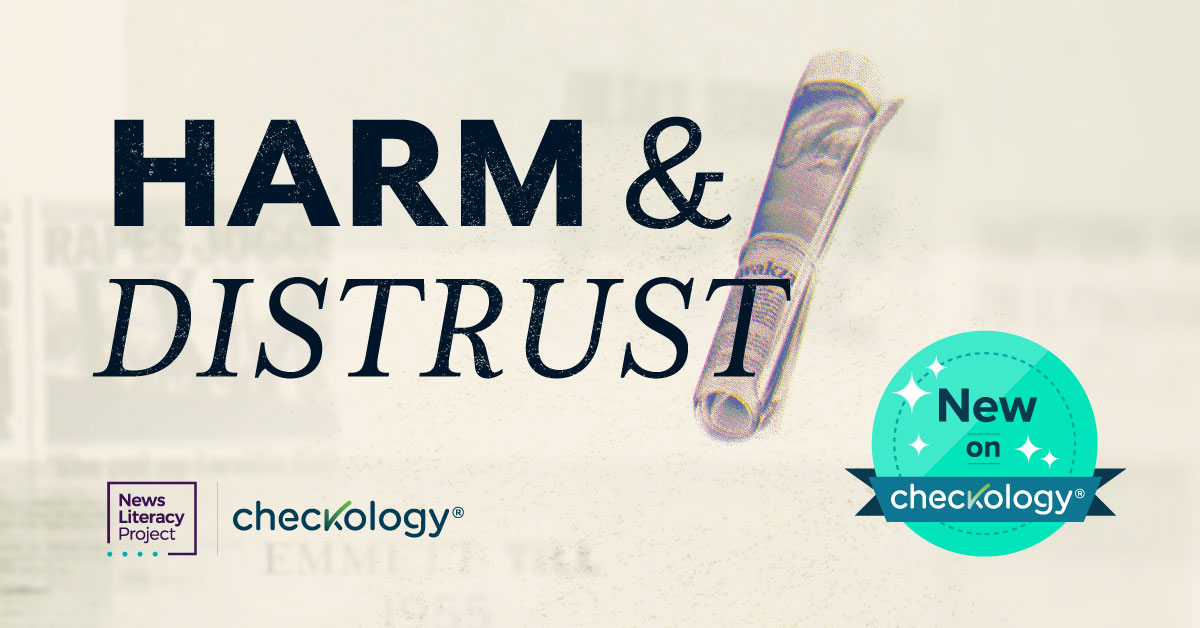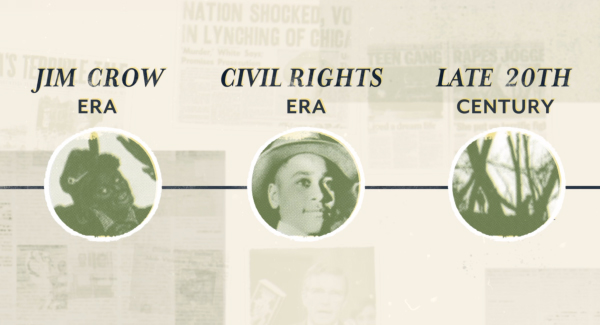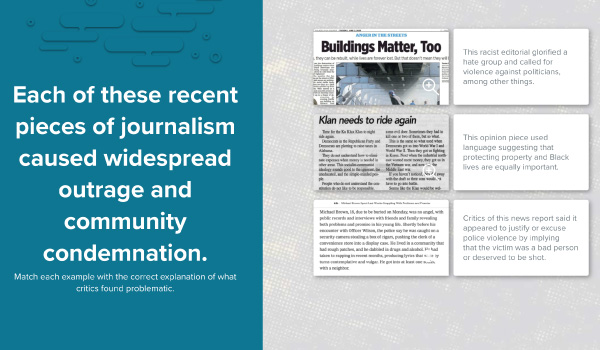
New Checkology® lesson explores history of racism in mainstream news

Newsrooms across the country aspire to standards and guidelines designed to minimize the influence of individual biases and to produce journalism that is fair, accurate and in the public’s interest. But for all the positive and crucial roles the press plays in American democracy, institutional news organizations also have legacies of exclusion and blatant harm that have severely eroded trust among specific groups of people.
The News Literacy Project tackles this complex but essential topic in its new interactive lesson, “Harm & Distrust,” available now for educators and students. The six-part module explores the history of racist mainstream news coverage of Black Americans as a case history to draw the larger subject of historic harm into focus. It’s hosted by veteran journalist Natalie Moore, who covers segregation and inequality for WBEZ Chicago.
The lesson begins by outlining four aspects of standards-based news coverage that, by necessity, require subjective judgments and hence more of the public’s trust: story selection, framing, tone and sourcing. Students then apply their understanding of these four concepts to a survey of historical coverage across three historical periods, exploring examples of openly racist news coverage from the Jim Crow era, the Civil Rights era and the late 20th century.
The lesson also covers the role that the Black press played in providing more accurate, urgent and critical coverage of atrocities — such as the murder of Emmett Till in 1955 — in sharp contrast to coverage by mainstream news organizations at the time.

Students also explore the findings of the 1968 Kerner Commission Report, which issued a searing indictment of the American news media’s failure to accurately represent the lived realities of Black Americans. The report’s recommendations for the media at the time bear a striking resemblance to the findings of a 2020 study by the Center for Media Engagement, which surveyed 1,000 Black Americans about mainstream news reporting on Black communities.
These documents — published more than 50 years apart — underscore the need for news organizations to increase racial diversity in newsrooms, to include Black Americans in coverage of ordinary life, and to develop relationships and sources in Black communities. In the lesson, students are asked to match similar recommendations from the Kerner Commission Report and the Center for Media Engagement’s study, underscoring the persistence of these long-standing needs.

Even as it draws attention to these continuing challenges, “Harm & Distrust” clearly acknowledges the demonstrable progress that has been made in newsrooms across the country.
The final section of the lesson looks at steps some news organizations have taken to increase newsroom diversity, including at the leadership level, and to be more accountable to the communities they serve. It explores four examples of news organizations working to take responsibility for racist historical coverage through published audits and apologies. These include the Orlando Sentinel’s audit and apology published in 2019; the Los Angeles Times’ examination of its “failures on race” published in 2020; The Kansas City Star’s 2020 apology for its history of racist coverage; and The Baltimore Sun’s sweeping apology for a multitude of past wrongs published in 2022.
Moore concludes the lesson by acknowledging that this subject is both painful and difficult, but it’s also necessary to confront if we hope to make journalism better.
“I still believe in the power of journalism to be the voice of the voiceless – to expose injustice, including racism – and bring about positive change that improves people’s lives. If I didn’t, I wouldn’t have dedicated my career to doing this work.”
“Harm & Distrust” concludes with a challenge for students: to help hold news organizations accountable to their own ideals and to the practice of improving coverage in ways that ensure they serve all members of the public equally.
You can preview this important new lesson and find the learning objectives and essential questions for discussion on the “Harm & Distrust” preview page. To assign the lesson, sign in to Checkology or register for an educator account. (As a reminder, Checkology is completely free!)
Checkology lessons and associated resources were created with the generous support of our funders.